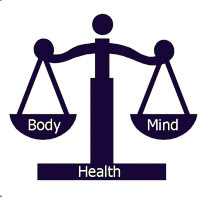 |
| photo source |
So perhaps you’ve attended some of our classes, perhaps you’ve had a private consultation with me – Chloe, RD – or, perhaps you have only checked in here once in a while to read my blog (Thank you! I appreciate it J). If simply the latter of the three is true, you might find yourself wondering a little about what all we stand for at the Good Life Center. Today, I’d like to take a little time to explain a part of what we advocate, an eating philosophy that supports our efforts in helping you achieve a healthy lifestyle. I’m talking about CLEAN EATING.
 |
| Front-of-the-Box Misconceptions Revealed |
This term has become a bit of a “buzz-word” lately among wellness communities and with good reason! Today, our supermarkets are riddled with products that (to be honest) are not even real food! They are products of science, not nature, and they are injected with dyes and other chemicals not meant for the human body. If you can’t pronounce the words in the ingredient list, do you think your body really knows how to digest it? So this brings us to the concept of clean eating. Clean eating is all about choosing foods that are natural and wholesome – particularly foods that are free of chemicals, additives and preservatives, and devoid of refined, processed ingredients.
This eating style has some distinct benefits which include: advancing your chances of maintaining a healthy weight; gaining better control of blood sugar; and, improving blood pressure and cholesterol levels. There are some additional perks that come along too, like increased energy, clearer skin, improved sleep and enhanced clarity of mind. I’m intrigued – how about you?
How do I change to a clean eating lifestyle? Author of The Complete Idiot’s Guide to Eating Clean, Diane Welland, MS, RD, outlined 7 simple steps for starting a Clean Eating diet:
1. Eat Whole Foods. Choose fresh, simple foods in their natural state, including meat, fish, poultry, game, dairy, fruits, vegetables, whole grains, legumes, seed and nuts. To determine what counts as “whole”, ask yourself – is this made by man or made by nature? If the answer is made by man, then it’s not a whole food.
2. Choose “Good” Carbs. You don’t have to give all carbs the boot, just the “bad” ones, which are likely refined and processed, like white flour, white sugar and white rice. Focus on healthy carbs that are high in fiber such as fruits, vegetables, alternative grains* and legumes. *Examples of alternative grains include: quinoa, wheat berries, spelt, farro, amaranth, millet, bulgur, and barley.
3. Smart Protein Picks. While most people probably meet their protein needs (roughly 45-55 grams per day on average), they can benefit from choosing high-quality sources like lean meats, fish, chicken, eggs, beans, legumes and soy. Prepackaged meats contain additives and preservatives, so should be limited if not completely eliminated.
4. Avoid the “Fat-Fear” Factor. Focus on healthy fats like unsaturated fat found in olive oil, avocados and nuts. Omega-3 fatty acids are also a crucial part of a balanced, healthy diet – sources include sardines, flax seeds, walnuts, salmon, cloves, halibut, shrimp, cod, tuna, soybeans, tofu, kale, collard greens, and winter squash. Limiting fat offenders – like saturated fat found in high-fat animal products is important too. Trans fats found in fried foods and baked goods should be avoided at all costs!
5. Minimize Eating. Instead of large portions or skipping meals, try a meal pattern of three small meals and 1-2 snacks each day. This eating pattern helps minimize hunger throughout the day, which in turn minimizes your chances of overeating.
6. Drink Water. Make this your first beverage of choice. Water helps to flush your system of all the gunk you were eating before. Your daily water needs can be determined by dividing your body weight in half and converting to ounces (i.e. if you weigh 200 pounds, your fluid needs are 200 ÷ 2 = 100 ounces of water per day).
7. Move It! A clean lifestyle is an active one; walking is a great place to start. Start with half a mile 3 days a week and gradually build on distance and number of days per week. A great final goal would be exercising for 45-60 minutes 5-6 days a week.
Now you’re equipped with the basics of what it means to eat clean, plus a little insight into the working minds behind the Good Life Center. Stay tuned for more advice on improving your lifestyle and bettering your health! (Also, click the captions under the photos below for some clean eating recipe inspiration, each from a different healthy website!)
 |
| Lemon Blueberry Oatmeal |
 |
| Roasted Grape Salad |
 |
| Jerk-Spiced Tilapia w/ Asparagus & Rice Pilaf |
Here’s to cleaner living,
Chloe RD and the GLC


No comments:
Post a Comment